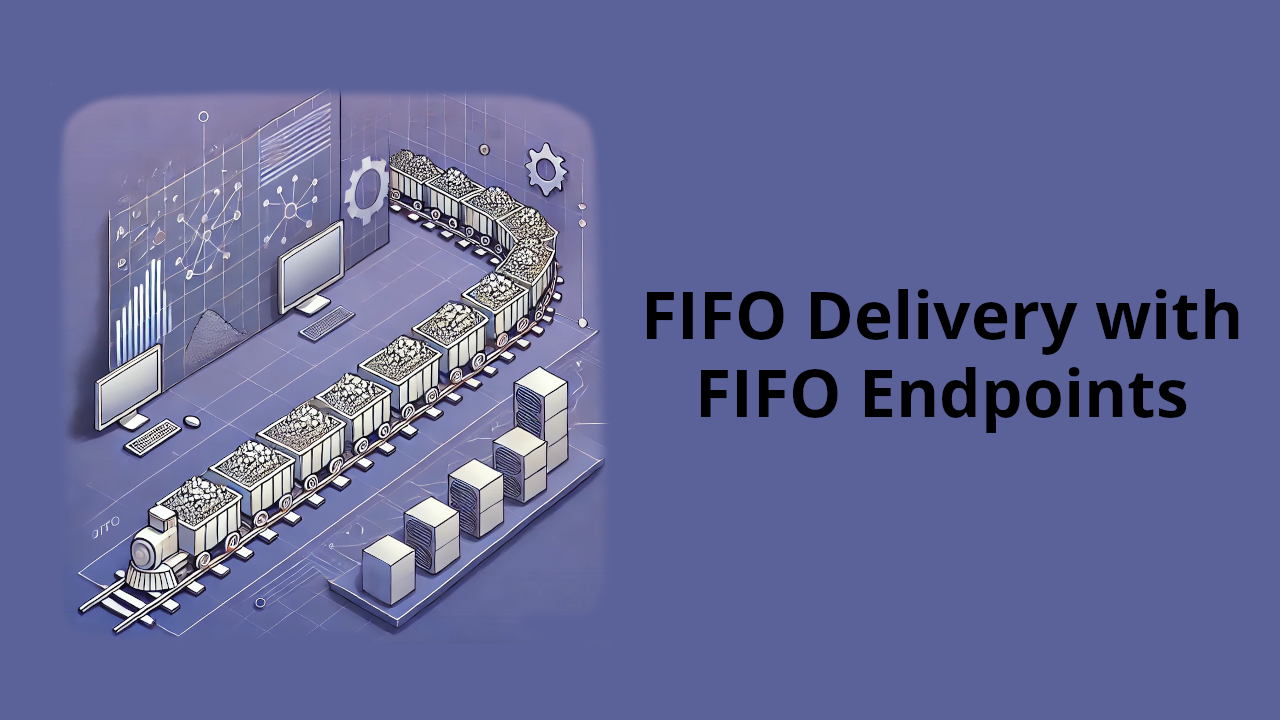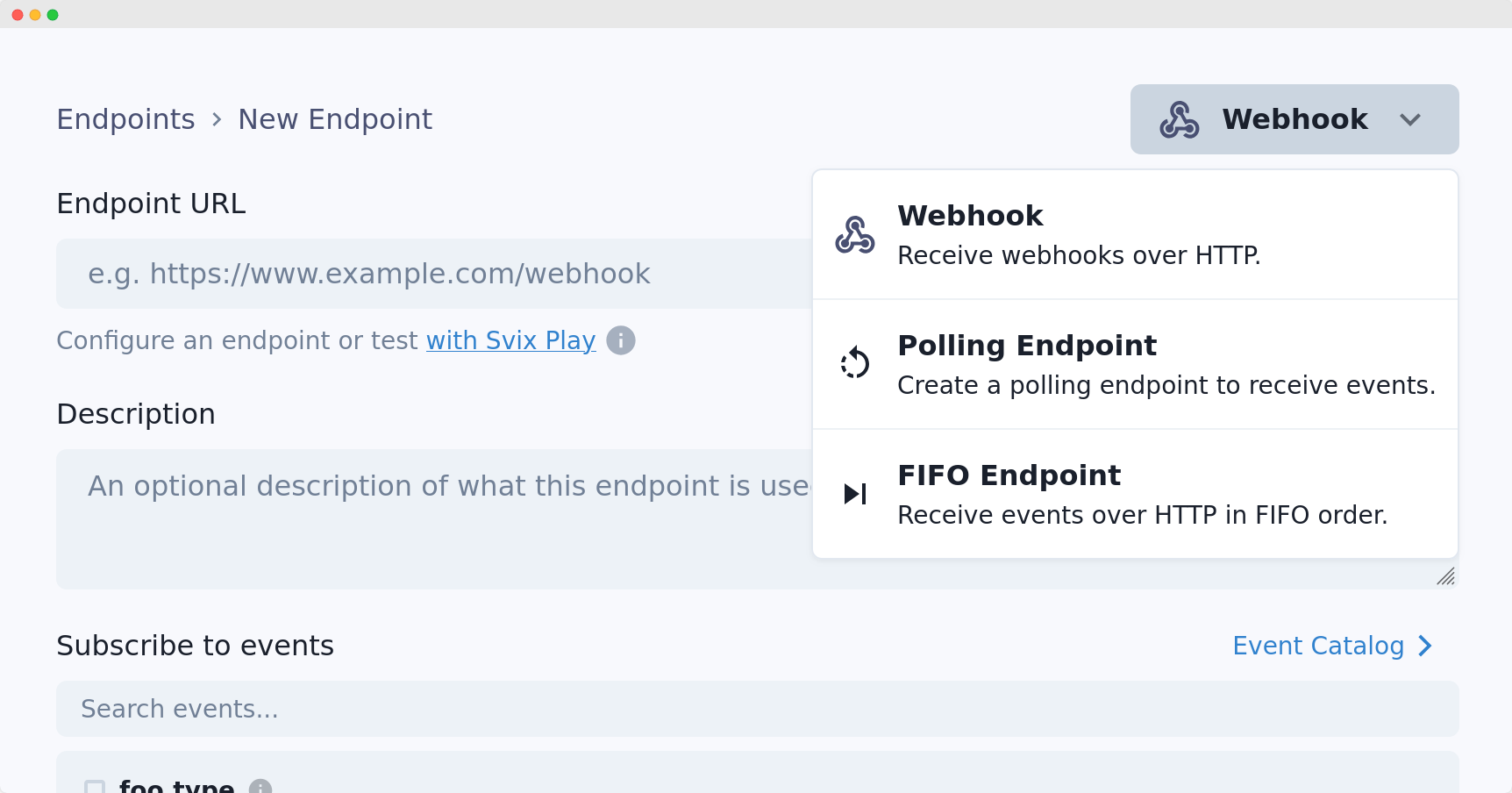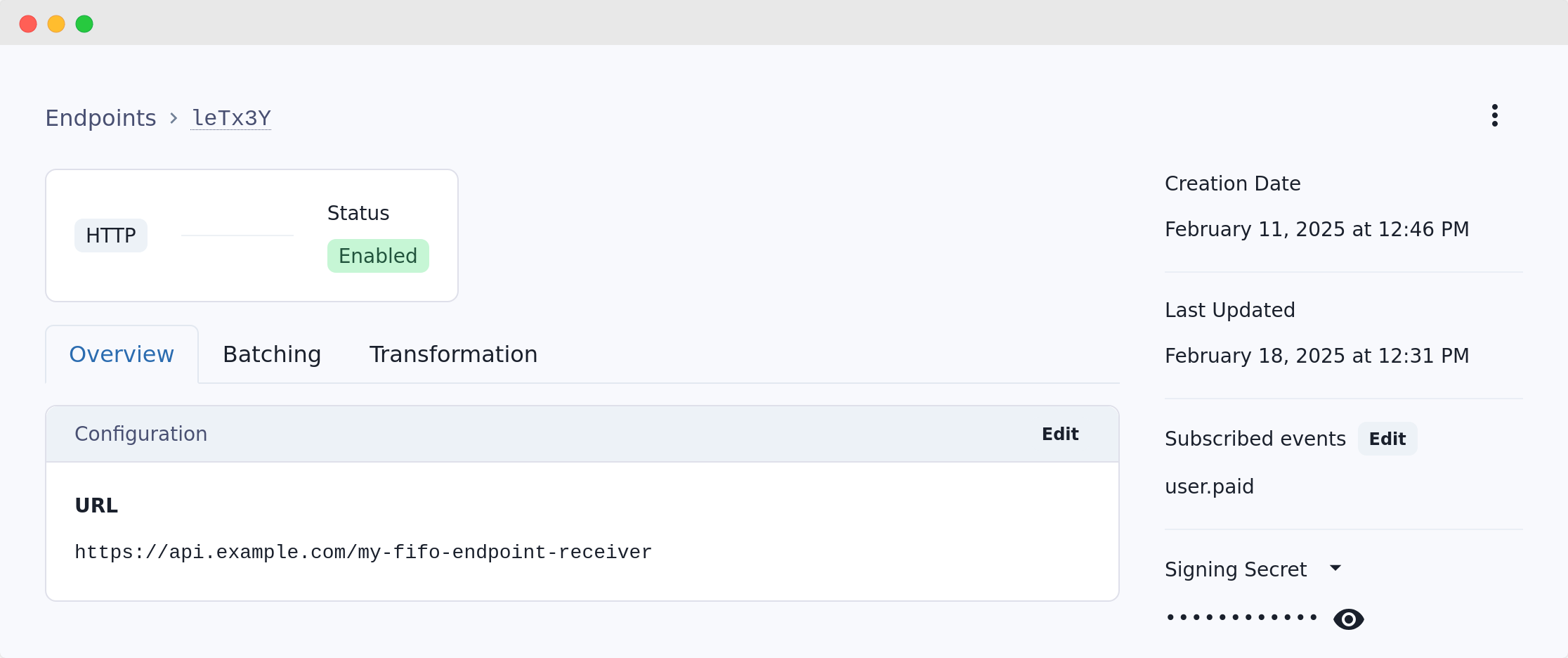- Published on
FIFO Ordered Webhooks Delivery
- Authors

- Name
- Tom Hacohen
- @TomHacohen

Svix is the enterprise ready webhooks sending service. With Svix, you can build a secure, reliable, and scalable webhook platform in minutes. Looking to send webhooks? Give it a try!
We are excited to announce FIFO Endpoints! FIFO endpoints let your webhook consumers receive webhooks in strict FIFO ordering (first in first out), unlike regular webhooks which are delivered independently and order is on a best effort basis.
Why not make all webhooks FIFO? Because ensuring strict FIFO ordering comes with some tradeoffs. For example? What do you do when a webhook fails, do you block the delivery, or do you move on to the next one? How is throughput affected if you have to wait for a successful delivery in order to deliver the next one? If you're interested, you can read more about the challenges with guaranteeing webhook ordering.
This is why almost all webhook senders (including Stripe, Github, Shopify, and Svix) send webhooks on a best effort basis rather than strict FIFO, and it's likely that you would want best effort ordering as well. Though it's not longer a choice you need to make, as we now support both in tandem!
The differences between FIFO and regular endpoints
Regular Svix endpoints send in order on a best effort basis. The way it works behind the scenes is that when Svix receives an "create message" call it adds the webhook to an internal queue which is then picked from in order. However, there are multiple workers that pick up tasks from the queue in parallel, so if a delivery takes a long time (e.g. the consumer is slow) multiple requests may happen in parallel. Additionally, if a delivery failed, a retry will be scheduled for later (following our retry policy) which will most likely happen after newer messages that may succeed on the first go.
This means that throughput is only limited by how quickly webhook consumers can consume events, as Svix doesn't need to wait for a successful delivery of one message before attempting another. Additionally, because webhooks may fail individually, their successes and failures are tracked individually. That's why Svix offers visibility into the full message attempt history for better debugging.
FIFO endpoints on the other hand offer strict FIFO ordering. This means that messages are sent to webhook consumes at the exact order in which they are processed from senders. Therefore a failure in delivery will block the whole delivery to this particular endpoint, and will be retried until it succeeds. No new messages will be delivered until the issue is resolved, and the endpoint will automatically disable itself if all retries fail.
Additionally, because of the strict ordering, Svix has to wait for a successful acknowledgement of delivery before sending any other messages. This can adversely affect throughput as even fast deliveries can take 40-50ms because of network latency effectively limiting the amount of messages to 20 per sec in the best case scenario. To fix throughput constraints FIFO endpoints deliver webhooks in configurable batch sizes.
How to use it
To enable FIFO endpoints for your customers go to the environment settings page on the Svix dashboard and enable the "Advanced Endpoints" setting. Once enabled your customers will be able to add a FIFO endpoint directly from the application portal. No code changes required, and your customers can choose whether to send to a regular endpoint, FIFO endpoint, or both, depending on their use-case.

Once created, the FIFO endpoint will be listed along the rest of the endpoints on the application portal. The FIFO endpoint view looks slightly different to the regular endpoint view. For example, there's no list of attempts (as explained above), there is a batching configuration tab, transformations and processed in batches (rather than one by one), and the status of the endpoint is front and center.

Closing words
While regular endpoints are the common webhook pattern, FIFO endpoints are a welcome addition for some use-cases that require strict ordering. Svix now supports both, and your customers can choose how they would like the events to be consumed.
In addition to being available in Svix Dispatch, FIFO endpoints are also available for operational webhooks and all of our Ingest customers (regardless of tier!).
The API for FIFO endpoints is currently being finalized so they are only available through the application portal UI. We will release the FIFO endpoint API in the coming few months, as well as additional functionality that we can't wait to share with everyone!
For more content like this, make sure to follow us on Twitter, Github, RSS, or our newsletter for the latest updates for the Svix webhook service, or join the discussion on our community Slack.